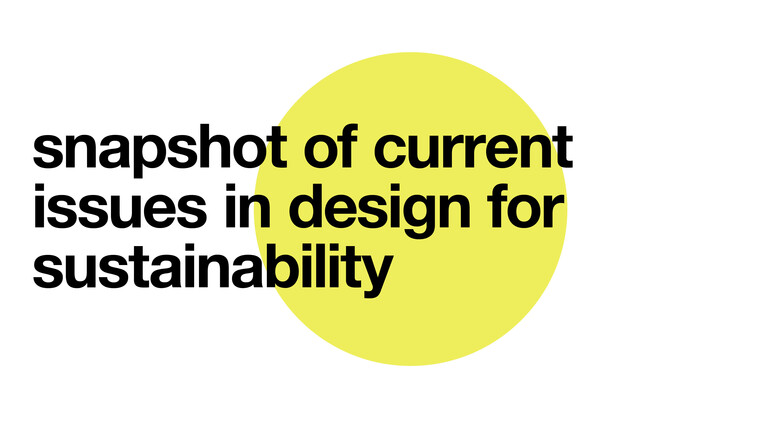bringing algorithm and imagination together for powerful design: 2019 Interview with min wang (china)

13.11.2019 Editorial
This interview with Profession Min Wang was first published in Chinese in the journal Design. It was translated and adapted for the International Council of Design.
Professor Min Wang is Vice Chairman of Academic Committee of , former Dean of School of Design at CAFA, and the honorary Chang Jiang Scholar Chair Professor. He was also the Chair Professor at School of Design, Hong Kong Polytechnic University, President of AGI China Chapter, and Design Director for Beijing 2008 Olympic Games Committee. Professor Min Wang taught at Yale University School of Art from 1990 to 1997and was appointed as Senior Art Director and Design Manager at Adobe.
During the interview, Professor Wang had talked about the impressive growth of design in the last 40 years since the Reform and 'Opening Up' in China. This economic reform included free-market components and resulted in vast expansion of China’s production and exporting capacities. According to his analysis, Chinese modern design concepts and mechanisms have experienced four stages in the past 40 years, namely: 1978-1988 striving to learn, 1988-1998 searching for identity, 1998-2008 coming to maturity, 2008-2018 gaining the confidence.
Design: 2019 marks the 70th anniversary of the establishment of the People's Republic of China and 4 decades of China’s economic reform and development. In the past 70 years, the design industry in China has made huge progress. Could you share with us some landmarks in time and events that impressed you, from your professional perspective?
Min: In 1982, I took a training course on the 'Three Components' (generated from design foundation courses at Bauhaus) for young teachers in Guangzhou Academy of Fine Arts. During that time, I often went to a bar in a five-star hotel (first one in China since Reform and Opening) on weekends, not for drinks, but to collect the thrown-away wine or liquor bottles and packages from abroad. I not only studied them but also mailed them back to the reference room at the library of China Academy of Fine Arts, where I was a young faculty member. I used them as examples for students to learn about packaging design and printing. At that time, Chinese designers could hardly see any international designs.
So in the early 1980s, we had the urge to learn about what was happening in design field outside of China. We wanted earnestly to grasp modern ideas and approaches and to learn about the outside world.
In the early 1990s, as the Art Director at Adobe in Silicon Valley, I often went to Asia to give lectures on the changes in design and printing industry brought by revolution in science and technology. At a forum held by the Shenzhen Graphic Design Association, I was impressed by a phase of growth that seemed to have happened almost overnight—whereby Chinese designers showed how quickly they had become familiar with the international design industry. In our conversations, they showed their knowledge about what is happening in the world, and expressed confidence, self-awareness, as well as high expectations for their role in China in the future. We owe this growth to Mr. Xu Wang (probably Chinese mainland’s most celebrated graphic designer, founder of WX-Design Studio and Design Exchange magazine). When I returned to America, I wrote an article titled Chinese Graphic Design after Mao, which was published in Print magazine (PRINT XLVIII:III). It was the first time that works done by the Chinese designers was introduced to the American design community.
In 2003, I returned to China to serve as Dean of the newly established School of Design at CAFA. It was a period of rapid development in Chinese design education. We started to discuss and explore the Chinese sentiment, aesthetics, and identity of design, and the design for 2008 Beijing Olympic Games were the perfect opportunity to put our pursuit into practices. The rapid development of Chinese graphic design was also evidenced by a large number of Chinese designers being accepted into the Alliance Graphique Internationale (AGI). When I was President of AGI China Chapter, I felt that outstanding Chinese designers were at the same level as their colleagues abroad, especially the emerging young designers with their vigor and characteristics.
As for my own career, the desktop publishing revolution was an extremely important stage in my life. Many new technologies, such as Adobe’s PostScript, Adobe fonts, Adobe Illustrator, the Apple Macintosh and LaserWriter, PageMaker from Aldus, etc., had completely changed designers’ ways of thinking and working. By removing the limits of lead type and phototypesetting, these new technologies brought infinite possibility to typography for designers. Since then, designers can freely arrange type on a page with high-precision output, without worrying about handmade monochrome drafts. As a designer at Adobe, I could immediately get my hands on these new instruments, and experience the revolutionary tech-driven change. The calendar I made for Adobe in 1987 represents the outcome of this change. The colors of the calendar was printed by thermal transfer printing since the color printer had not been invented yet.
Tech-driven changes had also overthrown existing typographic principles and aesthetic habits. It was a period of excitement and thrill and also concern about the new technologies—because traditional typographic designers had every reason to be skeptical, especially when facing piles of unprofessional typographic applications that were inconsistent with basic aesthetic principles.
But beyond the bubbles of new technology, what was left after the first impact of these new technologies was the imagination, innovation and cultural aesthetics that enabled technologies to become the power of expression and experiment. Through the designs I did for Adobe in the 1980s and 1990s, I wanted to encourage designers to use those new tools to play and explore further design possibilities, but at the same time following the necessary typographic design principles and the rational and emotional elements in traditional typographic design.
Design: In 2018 you gave a speech on the topic Design in China After 1978: Gaining the Confidence in which you divided the 40 years into 4 phases: 1. Striving for learning, 2. Searching for Identity, 3. Coming to Maturity, 4. Gaining the Confidence. There were 10 years for each phase. Looking into the future, what is your plan for the development of Chinese design?
Min: Last September I co-curated an exhibition, Chinese Design after 1978. We selected 40 cases or designers’ works for this exhibition, trying to represent and reflect on the culture and social meanings of design in China. Admittedly, one exhibition couldn’t summaries the enormity of the changes that had happened in the last 40 years, and the four phases were devised to give it some structure. But they could, to some extent, summaries the journey we had gone through as a country.
For the future, I believe that ‘empowerment by design’ will be possible, as the value of design is permeating all industries and aspects of our life.
Furthermore, we will witness the meticulous and exquisite design becoming the new norm of the industry, which means an increase of design level from outside to inside.
Already we can feel the driving force of Chinese design, the immensity of resources and power accumulated in industry, the dynamic design activities all over China, expanding design education in schools, and the entrance of capital into design, to mention just a few. But we must keep a cool head and dispense of what is superficial and precarious. We should be meticulous and pragmatic, aiming to push academic research, education and innovation further. In addition, we should establish a reasonable design mechanism and the right balance of supply and demand to increase the value of design in China.
Design: What do you think of the current situation for visual communication and design education in China? Do you see any problems?
Min: Since I started teaching at CAFA I have been focusing on typography, including the fundamental research of it. There have been over ten doctoral dissertations about type design written by my students, which cover various topics such as the history of type design in China, principles of type design, eastern and western typography, approaches of type design, new media and type design, the research of Hei typestyle, etc.. I have taught many courses, including both Western and Chinese Typography, with difference focuses and approaches.
After decades of development in design education, we have made great progress in terms of scale, here I mean the number of design programs and number of students currently studying design in Chinese colleges and art schools. We have improved information exchange and international communication. Our educators have adopted new educational concepts. We now need to pay more attention to students, to each student, nurturing them and encouraging them to innovate and create. Currently we find there is insufficient attention given to each student—our faculty members are just too busy.
Design: You were the Design Consultant of Beijing Olympic Games from 2004, and then Design Director of the 2008 Beijing Olympic Games Committee from 2006 to 2008, responsible for the image and identity design of the Games, the Look of the Games. Could you tell us something about this experience? How did the design of the Olympic Games influenced visual communication design in China?
Min: In 2004, I founded the Olympic Art Research Centre to encourage students and faculty members at CAFA to take part in the design for the 2008 Beijing Olympic Games. Design for Olympic became a great opportunity to promote design education and our solution for integrating Chinese heritage in a current design language that could be understood by the world. It was our goal to create a new branded image for China and our own interpretation of localising what is considered international. After 5 years of hard work, we had combined the Olympic spirit and traditional Chinese culture to create a series of works with Chinese characteristics. I am glad that we accumulated this experience for both teaching and practice in design, by using ‘Chinese language’ to express the Olympic spirit.
Theodora Mantzaris, Consultant of the Olympic Committee, Design Director of the 2004 Athens Olympic Games, spoke highly of CAFA’s Olympic design: “2008 Beijing Olympic Games provide the Olympic Games with precious design heritage. Its strong visual characteristics and cultural genes make it a masterpiece of the Olympic world!” Design historian Philip B. Meggs devoted a chapter to introduce the Olympic design by CAFA in his book Meggs’ History of Graphic Design 5th Edition.
Design: In visual communication what is the relationship between art and design?
Min: The boundaries between many types of design are disappearing. If we must find the difference between visual communication and other design displines, then, according to my understanding, it is that the former has a more explicit artistic vibe. Today, visual communication, to a large extent, is accomplished by designers, because they bring the concept, language, and the critical thinking of modern art into people’s day to day life through their works. The fact that few people care about modern art, not to mention visiting art galleries, only makes design, especially visual communication, a more prominent medium for art to reach and influence our consumer culture and society.
As an instrument and method of social innovation, design blends art and technology, indicating the value of art from a different perspective. Together, new concepts, creative ideas, forms and languages come out, exerting influences with each other.
Design: Will the approach of visual communication design change along with the rapid development of science and material?
Min: Of course. We are experiencing an unprecedented phase of scientific and technological development which greatly affects the design industry. Many works in the traditional design industry will be replaced by AI. Consequently, designers’ imagination and creativity will be extremely important. The expansion of intelligent application under the assistance of AI will inevitably change the approach and procedure of design. Therefore, instead of killing design, AI will only make it more powerful, with the computation and the imagination working together.
Einstein once observed, “Imagination is more important than knowledge. For knowledge is limited, whereas imagination embraces the entire world.” AI is a technology that can simulate the extension of human intelligence, and human intelligence includes imagination.
Design: What skills does it take to be a good visual communication designer?
Min: The first priority is to maintain your curiosity. A designer must be a lifelong learner.
Design: Is there any topic that you consider worth discussing in the industry?
Min: The blurring boundaries of design has brought new value to design and the possibility to drive innovation with design, but it has confused the identity of designers. In an era when everyone can design, how can designers maintain their self-discipline, professional pride and responsibility? This a question for us to answer.
As a group, the necessity of a designer’s guild is another important issue. A guild is of vital importance as a driving force of the industry, a maker of industrial principles, a judge of design standard, and a protector of designer’s rights. In China, these roles are largely played by government agencies, but design associations and guilds are just as necessary and important. Many existing associations and institutes are working on communication and exchange, but still, they are not as strong as guilds. In 40 years, China has become a country with a large design industry, many design institutes and designers, named four “City of Design” and held several annual design weeks in different part of the country. However, we are still far from having a strong design industry or mature designers’ community. Although the government and companies have started to value design, the environment of the industry remains problematic. Disrespect to designers and industrial regulations occurs from time to time; spec work is still common in the realm. Many local governments, companies, and institutions turn to the public to get cheap or even free designs. Such phenomenon shows disrespect to designers and design value and hurts the design innovation in China. These are problems waiting for guilds and associations to solve.
If something has been catching the attention of the industry for decades, that must have been the social responsibility and sustainable development. Our designs, good or bad, affect the society; therefore, the consciousness, recognition, and responsibility of designers are very important. Now judges of design competitions have taken sustainability into consideration as an important criterion. It has been an obvious focus of the activities I attended in the recent two months, such as La Biennale Internationale du Design de Saint-Étienne, Austria Graz Design Month, and at the AGI Conference in Seoul.

LINKS
2018 Platforms presentation by Min Wang (CAFA): Design in China after 1978

related
articles

robert l. peters: guiding the future of design

ICoD interviews elizabeth (dori) tunstall on decolonising design

it may look good on instagram but you want to enjoy living in it

designing for access
